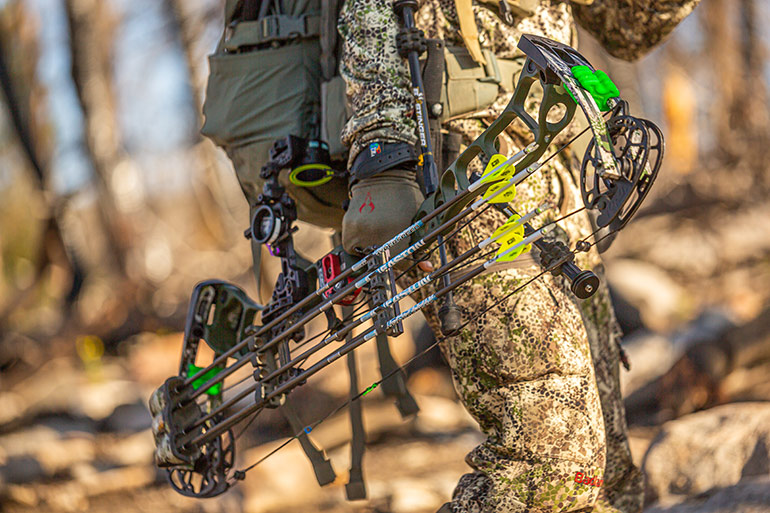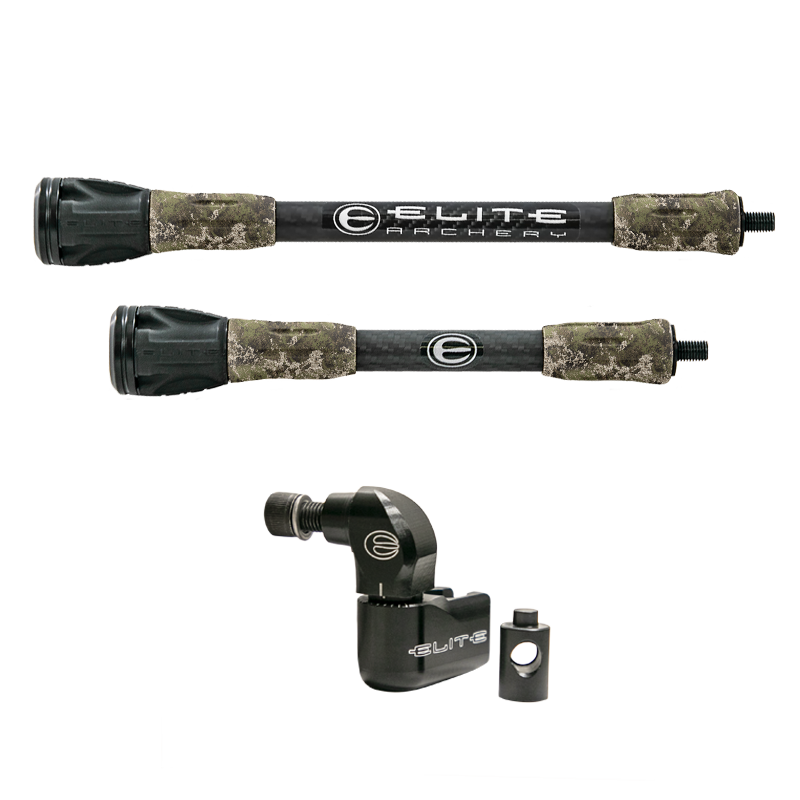Picking the very best Archery Stabilizer: Tips and Recommendations
Picking the very best Archery Stabilizer: Tips and Recommendations
Blog Article
The Ultimate Guide to Choosing the Right Archery Stabilizer for Improved Precision
Archery is a sporting activity that requires accuracy and accuracy, and selecting the right equipment is crucial for accomplishing optimum outcomes. Amongst the different devices offered, an archery stabilizer plays a substantial role in boosting accuracy. With so lots of options on the market, it can be overwhelming to establish which stabilizer is the appropriate fit for your requirements. In this extensive guide, we will certainly explore the vital elements to consider when selecting an archery stabilizer for enhanced precision. From discovering the optimum length to understanding the various layouts and materials, we will delve right into every little thing you require to recognize to make an educated decision. Whether you are a seasoned archer looking to update your devices or a novice looking for guidance, join us on this journey as we decipher the keys to choosing the excellent archery stabilizer.
Length: Locating the Optimal Stabilizer Size
Identifying the suitable stabilizer length is essential when selecting an archery stabilizer for ideal performance. The length of a stabilizer straight influences the balance, security, and accuracy of the bow. A stabilizer that is too long can make the bow really feel top-heavy and tough to manage, while a stabilizer that is as well short may not provide adequate security and dampening of vibrations. Discovering the best size requires considering factors such as the archer's shooting style, bow weight, and personal choice.
A longer stabilizer, generally ranging from 8 to 12 inches, can offer better stability and lower bow torque. This is particularly beneficial for archers who fire with a high draw weight or those who tend to torque the bow throughout the shot. The added length aids to disperse the weight equally and counterbalance any kind of torque or motion.
On the various other hand, a shorter stabilizer, normally between 4 to 7 inches, uses extra maneuverability and quicker response. It is preferred by archers who fire with a lower draw weight or those who require more wheelchair, such as seekers or 3D shooters. The shorter length enables easier activity through limited rooms and faster modifications.
Ultimately, the optimum stabilizer length is an issue of personal preference and shooting style. It is advised to trying out various lengths and observe the impacts on security and precision. Consulting with seasoned archers or experts can likewise supply valuable insights and recommendations.
Weight: Establishing the Appropriate Stabilizer Weight
After taking into consideration the optimum stabilizer length, the next important variable to think about when choosing an archery stabilizer is establishing the appropriate stabilizer weight - archery stabilizer. The weight of the stabilizer plays a critical role in boosting accuracy and security throughout the shot
The weight of the stabilizer impacts the equilibrium and control of the bow. A larger stabilizer can supply enhanced security and control, especially for shooters with a propensity for irregular shots or unstable hands. It helps to absorb the vibrations and recoil generated by the bow, lowering torque and minimizing the result on the arrow's trip.
On the various other hand, a lighter stabilizer enables a quicker and a lot more responsive bow. It can be beneficial for shooters who prioritize ability to move and rate over stability. Lighter stabilizers additionally minimize fatigue throughout long shooting sessions or competitors.
To figure out the suitable stabilizer weight for your demands, it is very important to consider your shooting design, physical strength, and bow arrangement. Try out different weights and observing the effect on your capturing efficiency is essential to finding the excellent equilibrium.
Inevitably, the ideal stabilizer weight will vary for each and every specific archer. It is suggested to start with a modest weight and make adjustments based upon personal choice and shooting outcomes. Remember, the goal is to attain a controlled and stable shot, while additionally keeping comfort and ease of usage.
Materials: Choosing the Right Materials for Toughness and Performance
When picking an archery stabilizer, it is crucial to thoroughly consider the materials made use of in its building and construction to make sure toughness and optimize performance. The selection of products can significantly influence the total high quality and effectiveness of the stabilizer.
One of one of the most typically utilized materials for stabilizers is carbon fiber. Carbon fiber offers a high strength-to-weight proportion, making it lightweight yet incredibly solid. This material decreases and soaks up vibrations bow torque, causing improved stability and accuracy. Additionally, carbon fiber stabilizers are resistant to temperature adjustments and are less most likely to warp or bend in time.
One more prominent material for stabilizers is light weight aluminum. Light weight aluminum stabilizers additionally offer a wide array of personalization choices, enabling archers to change the weight and length to match their choices.
Some stabilizers are built using a mix of materials. As an example, a stabilizer might have a carbon fiber core wrapped Full Report in an aluminum covering. This crossbreed design incorporates the very best high qualities of both products, supplying optimal security, toughness, and performance.
Layout: Comprehending the Different Stabilizer Styles and Their Effects
Considering the materials made use of in archery stabilizers, it is essential to currently explore the different layouts of stabilizers and their respective results. The design of an archery stabilizer plays a crucial function in enhancing accuracy and lowering vibration throughout the shot. There are several different layouts available in the marketplace, each with its own special qualities.

An additional preferred style is the side bar stabilizer. This design entails connecting a short pole to go right here the side of the bow, parallel to the major long pole. Side bar stabilizers help in counterbalancing the weight of devices, such as quivers or views, and supply additional security to the bow.
Some stabilizers include adjustable weights. These stabilizers permit archers to tweak the balance and feeling of their bows by including or removing weights. This attribute is especially helpful for archers that like a certain weight distribution or desire to trying out various configurations.
In addition, some stabilizers integrate dampening modern technology to decrease vibration and noise. These stabilizers usually have integrated dampeners or use products that take in resonances, resulting in a smoother and quieter shot.

Accessories: Discovering Added Accessories for Improved Security
These devices are designed to work in combination with the archery stabilizer to provide an even higher degree of security and precision. One such accessory is the V-bar or the side stabilizer mount.
Another accessory that can enhance stability is a bow sling. A bow sling is a strap that connects to the bow and permits the archer to maintain an unwinded hold on the bow handle without the concern of dropping it (archery stabilizer). This unwinded hold aids to decrease muscle stress and permits a more consistent and secure shot
Additionally, a stabilizer weight system can be made use of to adjust the equilibrium and security of the bow. These weight systems commonly include small weights that can be added or removed from the stabilizer to adjust the balance factor of the bow. By discovering the optimum equilibrium point, archers can attain an extra steady and exact shot.
Verdict
Finally, useful link picking the best archery stabilizer involves thinking about variables such as size, weight, materials, layout, and extra accessories. The optimal stabilizer size and weight will certainly depend on individual preferences and shooting style. Choosing resilient products is important for resilient efficiency. Recognizing the various stabilizer layouts will certainly help improve precision. Checking out added accessories can better enhance stability during archery capturing.
Determining the suitable stabilizer length is critical when selecting an archery stabilizer for ideal performance. A stabilizer that is too long can make the bow really feel tough and top-heavy to control, while a stabilizer that is also brief might not supply enough stability and dampening of resonances - archery stabilizer.Taking into account the materials utilized in archery stabilizers, it is essential to now delve right into the various styles of stabilizers and their respective results. Side bar stabilizers aid in counteracting the weight of accessories, such as views or quivers, and offer additional stability to the bow
These weight systems typically consist of tiny weights that can be included or gotten rid of from the stabilizer to adjust the balance factor of the bow.
Report this page